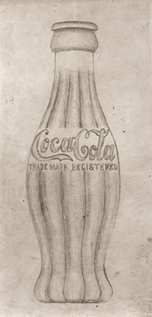One of the most fundamental concepts of economics is supply and demand, and it is the foundation of the market economy. Supply is how much you have of something, and demand is how much of that something people want. Generally speaking, the lower the price of a product, the more people will demand it. Supply and demand influence each other and impact prices of consumer goods and services within an economy. All prices change, so setting the right price is essential to a company’s success.
However, from the first Coca-Cola sale at Jacob’s Pharmacy in Atlanta on May 8th, 1886 until 1959, a bottle of Coke cost a nickel. During this period of 70 years, Guglielmo Marconi sent the first wireless transatlantic radio signal from England to Newfoundland; Albert Einstein published his theory of relativity.
The Wright brothers invented the first successful airplane; The British ocean liner Titanic sank; World War I started and ended; The Eighteenth Amendment brought Prohibition to America; The Great Depression started and ended; World War II started and ended; Sputnik, I became the first man-made satellite and many other radical changes in technology and industrialization were made yet none of these events and technological changes made any difference in the price of Coke.

When one considers everything that happened during this period of 70 years, it is hard to imagine that there was any product that remained at a single price. However, there was one product that succeeded, and that was Coke.
David Kestenbaum wrote an amazing report for NPR and discovered that two lawyers from Chattanooga played the key role in the way the price of coke remained at five cents for a period of 70 years.
In the beginning, Coca-Cola was a fountain drink, and they sold syrup to soda fountains to make Coke. The two lawyers were about to change that and asked the president of Coca-Cola to buy the syrup from Coca-Cola and pitched the idea to bottle it and sell it themselves. The president accepted the deal and signed a contract with the two lawyers. As written by David Kestenbaum, according to the terms of the deal, the lawyers would be able to buy the syrup at a fixed price. Forever.
Bottled Coke was extremely successful, and there was nothing that could stop the bottlers to raise the price of a bottle of Coke, and because of the bad deal, the company wouldn’t get any extra money. There was no mechanism that the company could use in order to force the bottlers to sell Coke at that price, so they decided to blanket the entire nation with Coca-Cola advertising that declared that Coca-Cola is 5 cents.

People were able to see these giant ads everywhere, making it hard for bottlers and fountains to increase the price. Eventually, the company renegotiated the contract with the bottlers, but the price stayed at a nickel.
They decided to keep the same price due to the decades of advertising it and also due to the Coca-Cola vending machines that were built to take a single coin: a nickel.

The company could convert the vending machines to take a dime, but they thought that it would be too much, so they asked the U.S. Treasury to issue a 7.5-cent coin and even asked President Eisenhower for help, but they weren’t able to convince them into doing it.
As David Kestenbaum wrote: “In the end, inflation killed the nickel Coke. The price of the ingredients rose. In the late 1940s, some stores sold Coke for 6 cents. The last nickel Coke was apparently in 1959”.
